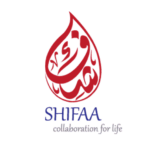
On International Women’s Day, Arwa Haider celebrates new musicians who are continuing a tradition of outspoken female singers in Arabic music.
By Arwa Haider
When a Saudi Arabian music video recently went viral, depicting niqab-clad female singers throwing shapes and chanting lines such as “may men disappear”, the colourful skit was hailed as a challenge to stereotypes. Yet the spotlight barely shifted: the notion of the voiceless Arab female lingers in the mainstream, despite the fact that Saudi does not reflect the Arab world at large. In fact, strong-voiced women have been a lynchpin of Arabic music in its far-ranging forms – from folk songs to commercial pop – across many generations and nations.
“All of the Arabic women I grew up listening to or watching had a very strong character,” says Lebanese singer-songwriter Yasmine Hamdan. She began her music career fronting Beirut’s first electro-punk outfit, Soapkills, in the late ‘90s, and is about to release her second solo album, Al Jamilat (The Beautiful Ones). “It’s normal; Arab women have always been very active at the forefront of culture – as film producers since the 1920s; as singers, dancers, choreographers, writers for much longer than that.”
The most iconic figure in Arabic music remains the Egyptian singer-songwriter and actress Umm Kulthum, known as ‘the Star of the East’. Born into an imam’s family at the turn of the 20th Century, she was studying classical repertoire by her teens, and making her mark as an extraordinary vocal talent by the 1920s. She also starred in several films, including 1937’s Nashid Al Amal (The Chant Of Hope), in which she played a divorced single mother working to provide for her daughter; its soundtrack included The University Song, with typical themes of determination, solidarity and national fervour. She presented womanhood at the forefront of national identity, alongside men, singing about politics as well as romantic epics.
Umm Kulthum proved an astute businesswoman as well as an accomplished performer; her powerful repertoire and savvy collaborations covered patriotic sentiments as well as yearning serenades, and Hamdan argues that “the unity of the Arab world was embodied in Umm Kulthum’s voice”. By the time of her death in 1975, she had earned international acclaim. As musicologist Virginia Danielson writes in Harvard Magazine, “Imagine a singer with the virtuosity of Joan Sutherland or Ella Fitzgerald, the public persona of Eleanor Roosevelt and the audience of Elvis, and you have Umm Kulthum”.
The spirit of the original female singers – mellifluous yet headstrong, poetic and political – is embodied in a new generation
Many of the pioneering stars of Arabic music were connected with the emerging ‘golden age’ of Egyptian cinema, which brought their talent and glamour to mass audiences. Top-billed names included Leila Mourad, from a Jewish Cairene family, and Asmahan, who came from a background of Syrian Druze nobility, and whose mesmerising musical range was cut short with her death in 1944, aged just 31. The orchestral songs of this era are still Arab pop culture staples, regularly covered alongside current commercial hits on reality shows like Arab Idol; however, the spirit of the original female singers – mellifluous yet headstrong, poetic and political, open to varied styles – is arguably best embodied in a new generation of independent artists.
Hamdan describes hearing Asmahan’s track Ya Habibi Ta’ala (My Beloved, Come) in a Beirut club at 4am as a musical “epiphany”; she recalls: “It felt extremely elegant, eloquent and emotional; sophisticated and edgy for its time.” On the electronic productions of her debut solo album, 2013’s Ya Nass (Hey People), Hamdan paid homage to the likes of Asmahan and Mourad, as well as legendary Egyptian singer/composer Mohammed Abdel Wahab, through covers and soulful original material.
Finding a voice
On her new album, Hamdan mostly focuses on her own songs, written from the perspective of female characters. “They have a lot of contradictions; I like to show my taste for imperfection,” she laughs. “These characters are both dominant and fragile, which is beautiful to me.” Choosing to sing in Arabic when her peers were gravitating to Western pop was, in its own way, a form of rebellion. She told the Guardian: “I felt that the Arabic language was a raw material that could be shaped, freely. This was something that was thrilling to me.”
Conflicting judgements of ‘respectability’ across the Arab world, about anything from dress codes to lyrics and mixed audiences, are another source of rebellion. “Well, there are lots of codes in Arabic music, and it’s not easy to break them,” replies Hamdan, who is now based in Paris with her husband (the Palestinian film director, Elia Suleiman), and continues to tour internationally. “But the conservatism is not only in religion; it can be social or intellectual, and there is a kind of taboo in touching ‘sacred’ older songs.”
The Tunisian-born New York-based protest musician Emel Mathlouthi, whose second album Ensen (Human) has just been released, echoes this sentiment: “We have a lot of female Arab pop stars, so that’s not a problem, but I definitely think that it’s harder when you have your own project,” she says. “In the Arab world, there are high expectations of good singers, which I really like, but the mainstream also has a very traditional approach, and it’s hard to get away from the image of the ‘static diva’.”
When I sing in my first language, whether in dialect or classical Arabic, the singing has another dimension – Emel Mathlouthi
The so-called “voice of the Tunisian Revolution” is a dynamic and politically conscious performer; her work has regularly tackled inequality and her track Kelmti Horra (My Word Is Free) was embraced as an anthem of the Arab Spring, leading to her performance at the 2015 Nobel Peace Prize Concert. Mathlouthi cites influences including “the strong vocals and deep songs” of Lebanese superstar Fairuz (who, like her compatriot Sabah, has headlined worldwide venues including New York’s Carnegie Hall, London’s Royal Albert Hall, and the Paris Olympia), and the Egyptian protest singer and composer Sheikh Imam. She’s also a fan of US singer-songwriter Joni Mitchell – on this year’s International Women’s Day, Mathlouthi is taking part in a concert celebrating Mitchell’s album Hejira at London’s Southbank Centre.
Mathlouthi says she wanted her album Ensen “to reflect on the contrasts of Arab Muslim society; this album was a quest about how to connect with heritage, and how to distribute that with a personal touch.” She believes the choice of language itself can be a form of speaking out. “What I find hard right now is that when a woman sings in Arabic, unless it’s in an exotic context or party music, it blocks her from participating in the mainstream. Perhaps this is true of most non-English tongues, but when I sing in my first language, whether in dialect or fusha [classical Arabic], the singing has another dimension. As Arabs, it’s important that we associate our voices with art and positive expressions.”
Beyond the mainstream
By stepping out of the mainstream, many artists can gain more autonomy – and tap into the legacy of strong female Arab artists at the same time. Around the Middle East, diverse underground and DIY music scenes offer a counterpoint to glossy commercial Arab pop. Maryam Saleh, a singer-songwriter from Cairo, argues that both female and male players have to strive equally hard in this independent realm, where there is relatively little infrastructure for venues and labels: in fact, compared to male counterparts, she says, “you somehow harbour a sense of empowerment as an independent female artist here”.
Of course, strong female voices aren’t always in synch; for Saleh, Umm Kulthum represents a music and business talent who aligned with authority: “Her voice, interpretation, choices and alliances summed up to turn her into an icon and institution. In the case of female alternative artists today, they are truly independent, as well as being the composers and producers of their own work; [Palestinian singer and musician] Kamilya Jubran is a great example.”
Saleh’s music, such as the track Toul El-Tarie (On All The Roads), is beautifully poetic and gritty, and her songs combine her own lyrics with past and present Arabic poetry, including her Egyptian contemporary Mido Zoheir. “I’m drawn to texts that unassumingly express sentiments we feel in everyday life… sort of like riddles, satirical, yet they strike very personal chords,” she says.
Sarah El-Miniawy, who founded the ground-breaking international music management and PR agency Simsara, argues that “alternative Arabic music, or any non-English speaking music for that matter, is hardly featured in mainstream media; when it is, the framing is within the politics of the region, and that’s the same for both genders.
“There is no denying that the environment is tougher on Arab independent artists, and so naturally you become more resourceful with the little you have. If we go as far as saying that being oppressed inspires you and makes you more determined, then it verges on romanticising a dire reality. Independent musicians in the Arab world pursue their vocation just like any other musician elsewhere, and they adapt to the lifestyle it brings to them.”
Both El-Miniawy and Saleh point out that, in the digital age, these varied forms in music and arts develop more swiftly than ever. And it is in this limitless space that more points of connection are made across the Arab world, between genres and generations, with strong female voices shifting shape, confronting reality and summoning fantasy, and continuing to resonate.







Copyright © 2024 The Olive Tree SAL, all rights reserved. Terms of Use | Privacy Policy